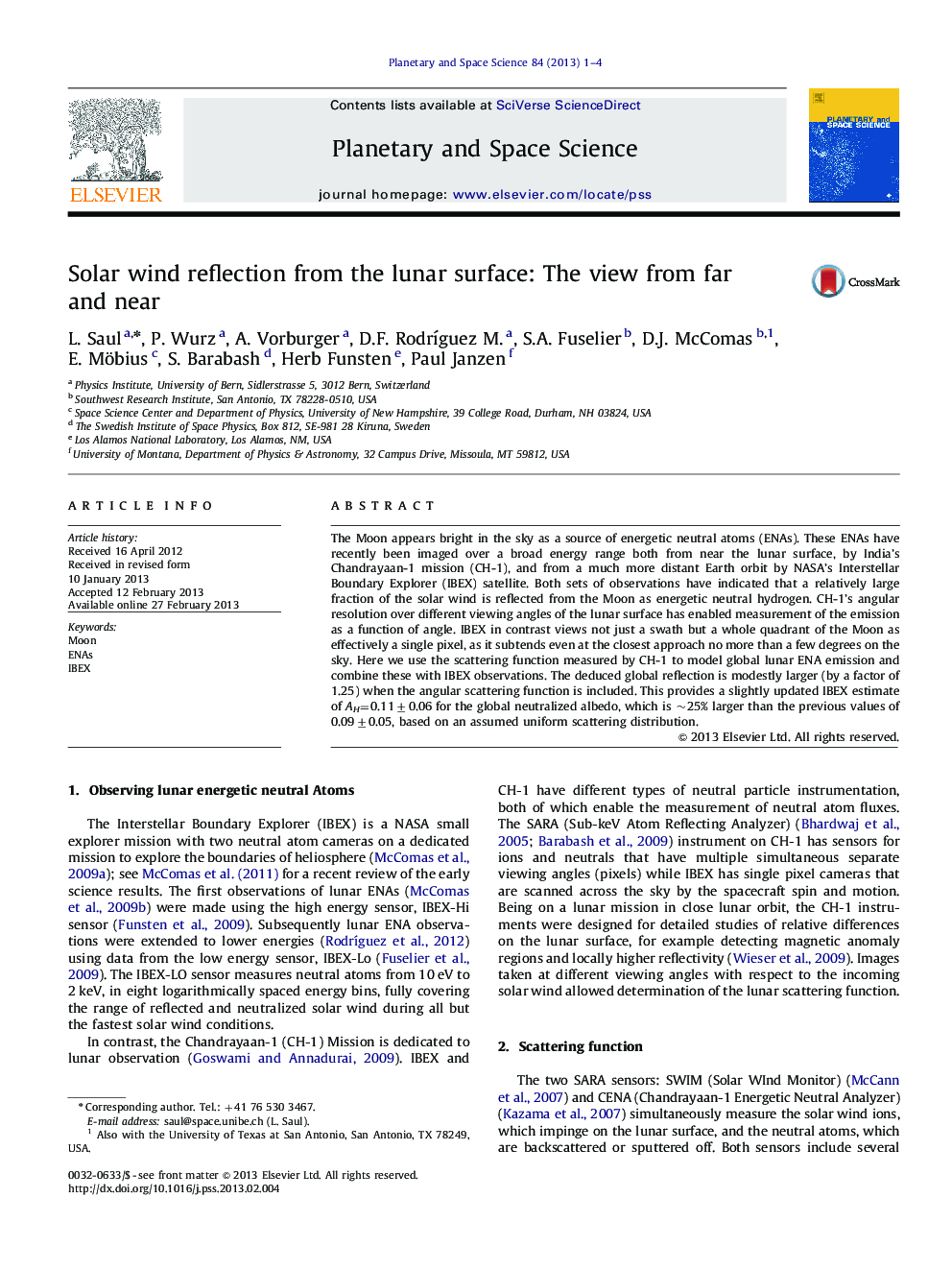| Article ID | Journal | Published Year | Pages | File Type |
|---|---|---|---|---|
| 1781306 | Planetary and Space Science | 2013 | 4 Pages |
The Moon appears bright in the sky as a source of energetic neutral atoms (ENAs). These ENAs have recently been imaged over a broad energy range both from near the lunar surface, by India's Chandrayaan-1 mission (CH-1), and from a much more distant Earth orbit by NASA's Interstellar Boundary Explorer (IBEX) satellite. Both sets of observations have indicated that a relatively large fraction of the solar wind is reflected from the Moon as energetic neutral hydrogen. CH-1's angular resolution over different viewing angles of the lunar surface has enabled measurement of the emission as a function of angle. IBEX in contrast views not just a swath but a whole quadrant of the Moon as effectively a single pixel, as it subtends even at the closest approach no more than a few degrees on the sky. Here we use the scattering function measured by CH-1 to model global lunar ENA emission and combine these with IBEX observations. The deduced global reflection is modestly larger (by a factor of 1.25) when the angular scattering function is included. This provides a slightly updated IBEX estimate of AH=0.11±0.06 for the global neutralized albedo, which is ∼25% larger than the previous values of 0.09±0.05, based on an assumed uniform scattering distribution.
Research highlights► We compare IBEX and Chandrayaan measurements of lunarENAs. ► Scattering functions are integrated to model IBEX measurements. ► Chandrayaan measurements are important in interpreting IBEX measurements. ► We find a 15% correction to previous IBEX estimates.
